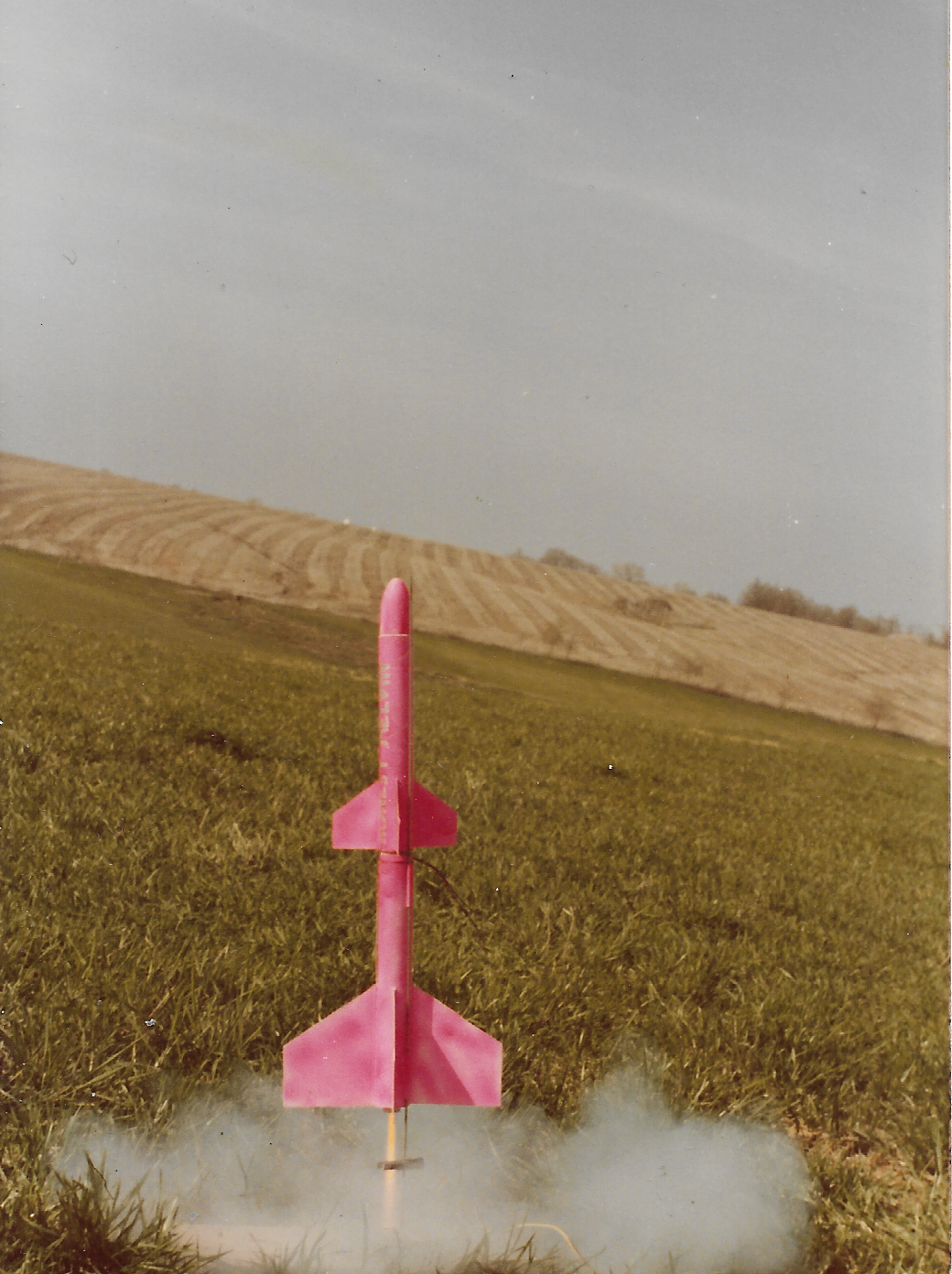Model Rocketry
Model rocketry changed my life back in the 1970s. I built my first rocket, an Estes Big Bertha the summer between 3rd and 4th grade, which I think was the summer of 1970.
I was so eager to fly the first rocket I built, a Big Bertha, that I didn’t even paint it. Looking at the modern Big Bertha web page, I don’t see A8-3 as a recommended engine for it, but I’m pretty sure that’s what my mom had me use in its first flight. Worked perfectly! Soft landing in the field behind my mom’s house!
I flew it again, with a much higher energy motor, perhaps a B4-2. The wind caught it as it was parachuting down, and blew it into the top branches of a 30-40 foot high oak tree across the field behind my mom’s house.
From the National Association of Rocketry Model Rocket Safety Code:
11. Recovery Safety I will not attempt to recover my rocket from power lines, tall trees, or other dangerous places.
My mom made me read the safety code, read it to her, and tell her what every item meant. The red-and-white Official Estes Parachute was visible for years in that old oak tree.

Foxtrot Sunday strip, 2024-06-23. Some things never change. The author of Foxtrot, Bill Amend, has been frighteningly accurate on a number of topics. The kid with glasses has been depicted as Linux or Unix user in the past.
Here’s a scan of a photo from about 1979, maybe 1980.

That’s the Honest Melvin, a design from the height of my personal aerospace career. Made from not from a carpet tube, but rather some tubes from aluminum foil or some kind of plastic wrap. Two stage, Estes D engines. The first stage is quite long by model rocket standards, because the second stage is not ignited by hot gas from the first stage engine.
I had built an electro-mechanical second stage ignition system, designed around a mercury switch salvaged from a thermostat, and a capacitor salvaged from a broken radio.
You can see a short section of body between the bottom of the second stage and the top of the first stage. That’s where the charging leads stuck out. Get the rocket all prepped, engines in place, parachutes loaded (even the first stage had a parachute), on the launch rod, ignitor leads hooked up. Then use a 9-volt battery to charge the capacitor. Cross your fingers and launch it.
When the first stage motor burned out, aerodynamic drag immediately slowed the Honest Melvin. The blob of Mercury in the ignition system was not affected by aerodynamic drag, and so flopped up against the contacts. This closed the ignition circuit, energizing a flashbulb extracted from a 126 film camera flashcube. The heat from the flashcube ignited a fuse-like ignitor from (as I remember) Flight Systems, Incorporated. This ignited the second stage engine.
As you might imagine, I did minimal ground testing, although I did try the mercury blob flopping several times. Reliability was a problem, as I was not a proficient solderer. I recall flying the Honest Melvin only twice. It worked the day on which that photo was taken. The second flight involved second stage ignition when it was pointing at the ground. No one was injured.
I derived the name “Honest Melvin” from the 1953 Douglas short range ballistic missile, the Honest John. Honest John was an aerodynamically stabilized missile (!!!) with a range of 3 to 15 miles, and a 20 kiloton nuclear warhead. I can’t believe they designed and built something like that, nor can I believe that people seriously thought they’d fire them and live to see another day.
I got the “Melvin” part of the name from a school bus driver. Melvin was employed by Weber Bus Inc of Kirksville, MO. He was a hardass, assigned to drive whatever the most ill-behaved bus was that week. I rode the R-10 bus to and from school. R-10 was notoriously the most rowdy and ill-behaved bus route in all of Adair County R-III school district. Melvin wore a trucker cap, a white long sleeve, collared shirt, a red or green quilted hunting vest, and green rubber farmer’s boots. Rain or shine, hot or cold, same outfit.
Melvin was a man of few words, and what words he did have were delivered in a gravelly, nearly incomprehensible rural northern Missouri accent. I only remember him saying two sentences:
- Burr shup back air
- Kwitcher rasslin
That is, “Better shut up back there” and “Quit your wrestling”.
When I was in college in the early 1980s, my mom worked as a 1st-2nd-3rd grade teacher. One Thanksgiving when I was home, she apologized to me for never believing me about Melvin. Apparently she had overheard some of her students saying “Burr shup back air” to each other, in almost exactly the same phrasing I’d used as a 2nd grader. She asked her kids who they were imitating, and they told her her, “Melvin!”
Just like for Bobby Sullivan, I can find no record for any one named “Melvin” who drove buses for Adair County R-III. Melvin is gone, like tears in rain.
